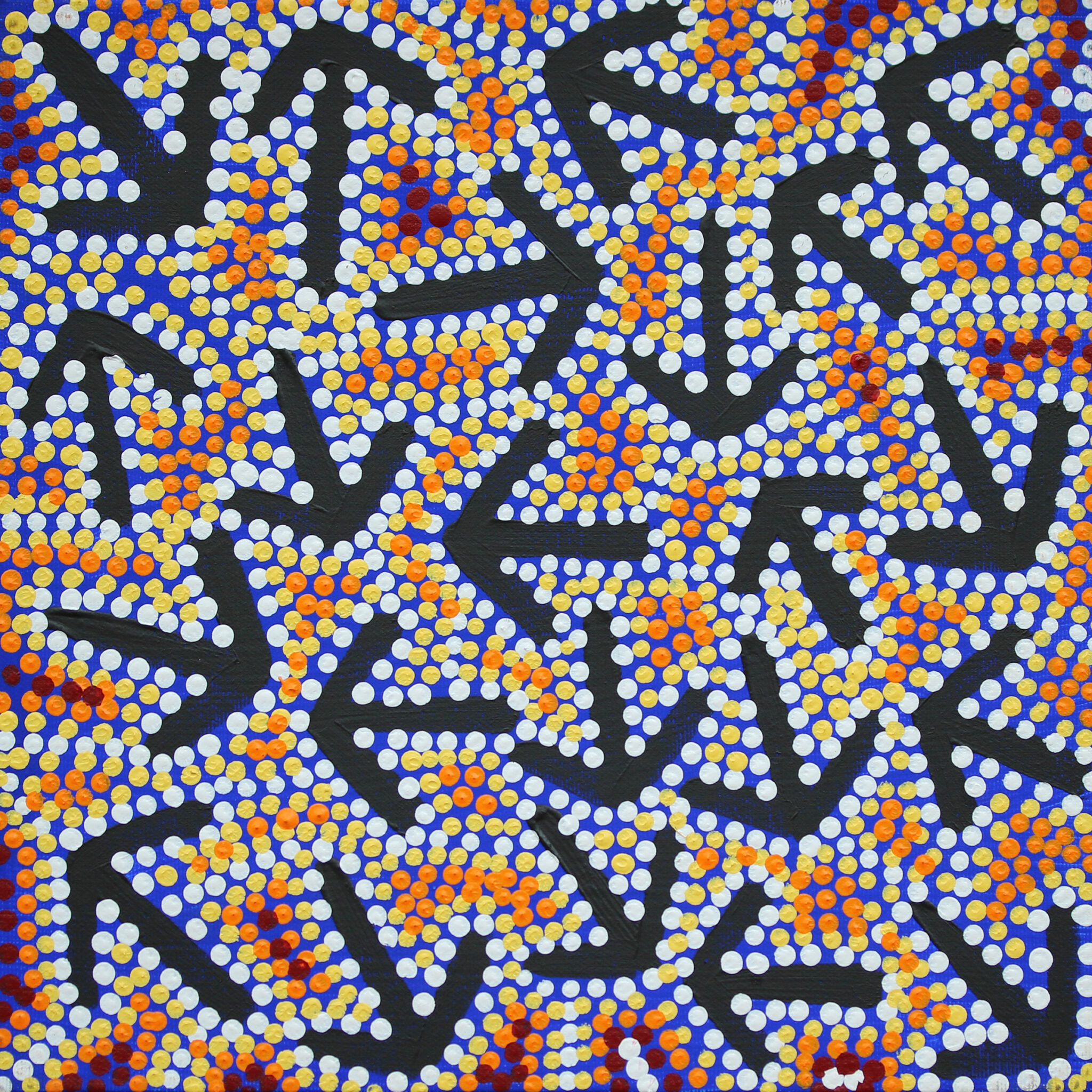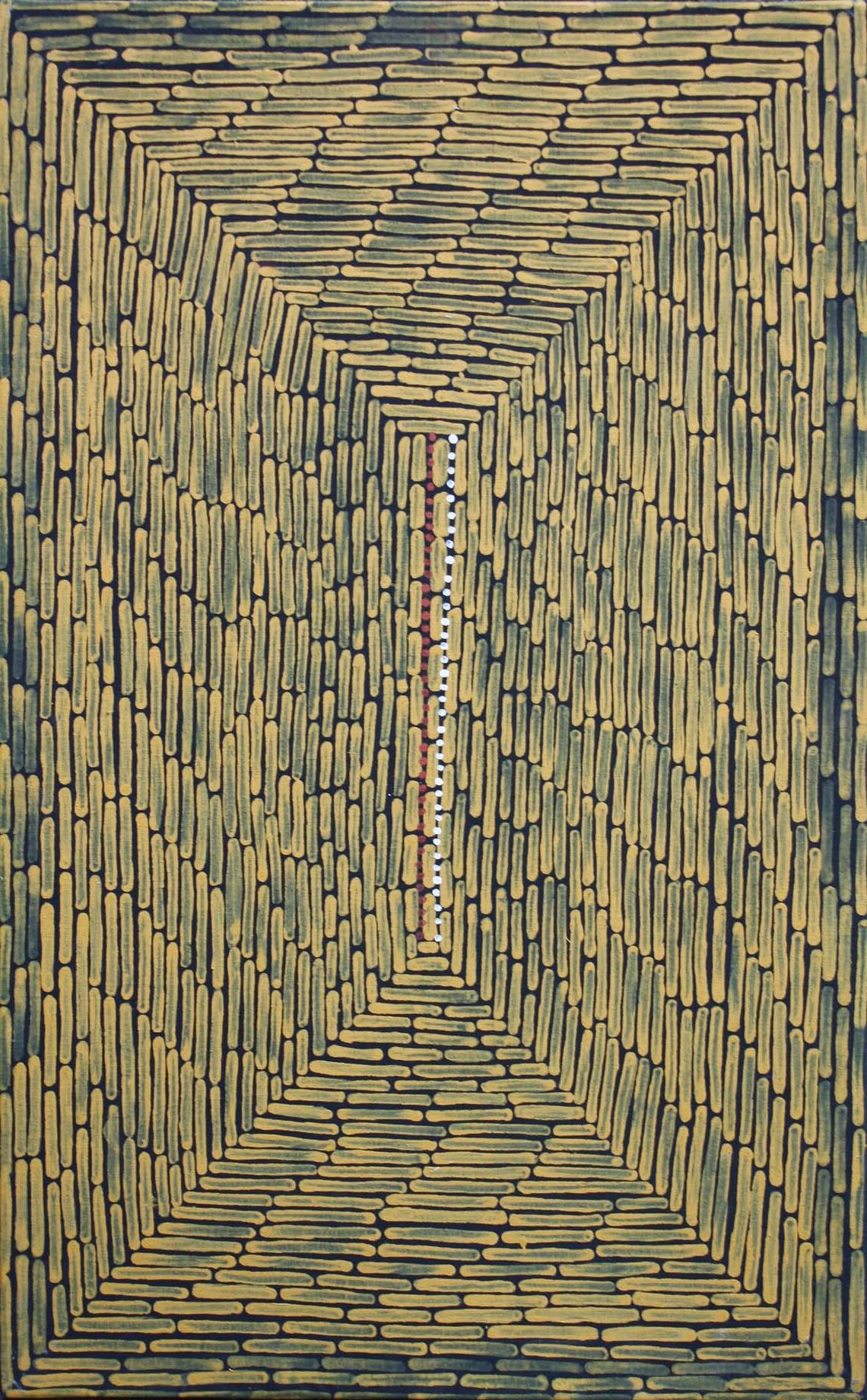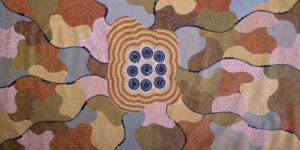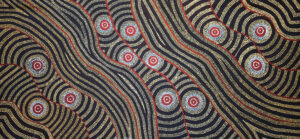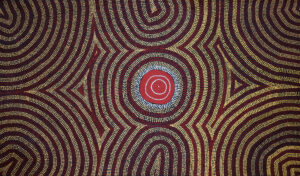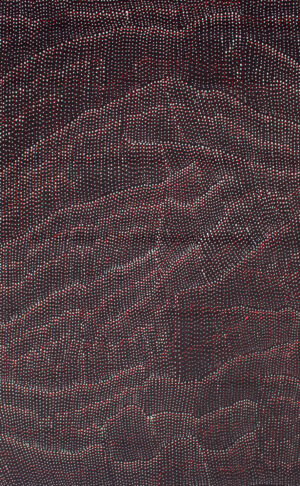Serial:
Size:
$18,000 (tax inc.)
1 in stock
The story:
Damper Seed – 10 ft X 6 ft canvas Dreaming – Damper Seed (ngurlu) Skin Group – Nakamarra, Jupurrurla, Napurrurla, Jakamarra Place – Pirliwarnawarna/Janjipi Long ago the Spinifex Pidgeon (ngarntipi) creation story tells us that the journey started in the south, at Janjipi. It is said that here he made the designs for the body that would represent his family and skingroup that belong to the Damper Seed Dreaming. He was painting the design and looking at his reflection in the rockhole (represented by the circle in the middle) while singing different songs that became the creation. The two large lines moving across the painting represent these ancestral lines, as he started in the south and traveled north. As he was traveling north and singing he called to the others on his way to Pirliwarnawarna to tell them that the seeds were ready for harvest. All the pidgeons from near and far heard him and came to collect the seeds with him, flapping their wings and gathering the seeds underneath the spinifex. They would then leave the seeds on the flat termite mounds (represented by the brown circles and the white dots, which are the seeds) The orange bull ants would clean the seeds by removing all the sticks, sand and grass, etc., leaving the seeds in a big mound to be gathered later by the women. The women waited a few days to allow the seeds to dry out in the sun. He had no grinding stones of his own, so he took them from his family in Pirliwarnawarna, which caused him trouble. Later he had to return them in a good way because this place was too powerful and sacred, having it’s own designs already. The women gathered the seeds and put them in the cooloman to take home. They would then remove the husk by winnowing the seeds with the cooloman. Later they would grind the seeds and make it into Damper cakes or bread. You can see these ladies sitting in their circles (the bla8181.8181k U shape) with their digging sticks and coolamans right next to the spinifex. The brown oblong circles with the white dots are the grinding stones, while the cakes are the golden yellow oblongs. Nearby you will also see the grubs that live in the ground under the spinifex. They soften the roots after the rains come which makes it easier to harvest. You can also see the body designs that the pidgeon painted on himself, as well as his dancing sticks, that are powerful and sacred in their own right. After the creation was finished the pidgeon returned to Janjipi and lived happy with his family to the end of his days. The people remember his creation through the stories, songs and dance that commemorate his travels.
-
29 Hunter St, Hobart 7000,
Tasmania, Australia - +61 3 6236 9200
- euan@artmob.com.au
Cash – locally only – up to $10,000 only. Layby facilities available. Card details can be advised securely using WhatsApp.
© Art Mob Pty Ltd, Aboriginal Fine Art Dealer, all rights reserved.
